- Home
- Isaac Asimov
Asimov's New Guide to Science
Asimov's New Guide to Science Read online
Asimov’s
New Guide to Science
ISAAC ASIMOV
TO
Janet Jeppson Asimov
who shares my interest in science
and in every other aspect of my life
Contents
* * *
Preface
Chapter 1
What is Science? THE DESIRE TO KNOW
THE GREEKS
GEOMETRY AND MATHEMATICS
THE DEDUCTIVE PROCESS
THE RENAISSANCE AND COPERNICUS
EXPERIMENTATION AND INDUCTION
MODERN SCIENCE
PART I
The Physical Sciences
Chapter 2
The Universe The Size of the Universe MEASURING THE SOLAR SYSTEM
THE FARTHER STARS
MEASURING A STAR’S BRIGHTNESS
DETERMINING THE GALAXY’S SIZE
ENLARGING THE UNIVERSE
SPIRAL GALAXIES
CLUSTERS OF GALAXIES
Tbe Birth of the Universe
THE AGE OF THE EARTH
THE SUN AND THE SOLAR SYSTEM
THE BIG BANG
The Death of the Sun NOVAE AND SUPERNOVAE
EVOLUTION OF THE STARS
The Windows to the Universe THE TELESCOPE
THE SPECTROSCOPE
PHOTOGRAPHY
RADIO ASTRONOMY
LOOKING BEYOND OUR GALAXY
The New Objects QUASARS
NEUTRON STARS
BLACK HOLES
“EMPTY” SPACE
Chapter 3
The Solar System Birth of the Solar System
The Sun
The Moon MEASURING THE MOON
GOING TO THE MOON
ROCKETRY
EXPLORING THE MOON
Venus and Mercury MEASURING THE PLANETS
THE VENUS PROBES
THE MERCURY PROBES
Mars MAPPING MARS
THE MARS PROBES
THE MARTIAN SATELLITES
Jupiter JOVIAN SATELLITES
JUPITER’S SHAPE AND SURFACE
JUPITER’S SUBSTANCE
THE JUPITER PROBES
Saturn SATURN’S RINGS
THE SATURNIAN SATELLITES
The Outermost Planets URANUS
NEPTUNE
PLUTO
Asteroids ASTEROIDS BEYOND MARS’S ORBIT
EARTH GRAZERS AND APOLLO OBJECTS
Comets
Chapter 4
The Earth Of Shape and Size THE EARTH AS SPHERE
MEASURING THE GEOID
WEIGHING THE EARTH
Earth’s Layers EARTHQUAKES
VOLCANOES
FORMATION OF EARTH’S CRUST
THE LIQUID CORE
EARTH’S MANTLE
THE ORIGIN OF THE MOON
THE EARTH AS LIQUID
The Ocean THE CURRENTS
THE OCEAN’S RESOURCES
THE OCEAN DEPTHS AND CONTINENTAL CHANGES
LIFE IN THE DEEP
DEEP-SEA DIVING
The Icecaps THE NORTH POLE
THE SOUTH POLE—ANTARCTICA
THE INTERNATIONAL GEOPHYSICAL YEAR
GLACIERS
CAUSES OF ICE AGES
Chapter 5
The Atmosphere The Shells of Air MEASURING AIR
AIR TRAVEL
The Gases in Air THE LOWER ATMOSPHERE
THE STRATOSPHERE
THE IONOSPHERE
Magnets MAGNETISM AND ELECTRICITY
EARTH’S MAGNETIC FIELD
THE SOLAR WIND
THE MAGNETOSPHERE
PLANETARY MAGNETOSPHERES
Meteors and Meteorites METEORS
METEORITES
Air: Keeping It and Getting It ESCAPE VELOCITY
THE ORIGINAL ATMOSPHERE
Chapter 6
The Elements The Periodic Table EARLY THEORIES
ATOMIC THEORY
MENDELEEV’S PERIODIC TABLE
ATOMIC NUMBERS
Radioactive Elements IDENTIFYING THE ELEMENTS
FINDING THE MISSING ELEMENTS
TRANSURANIUM ELEMENTS
SUPER-HEAVY ELEMENTS
Electrons THE PERIODICITY OF THE PERIODIC TABLE
THE NOBLE, OR INERT, GASES
THE RARE-EARTH ELEMENTS
THE TRANSITIONAL ELEMENTS
THE ACTINIDES
Gases LIQUEFACTION
ROCKET FUEL
SUPERCONDUCTORS AND SUPERFLUIDS
CRYOGENICS
HIGH PRESSURES
Metals IRON AND STEEL
NEW METALS
Chapter 7
The Particles The Nuclear Atom IDENTIFYING THE PARTICLES
THE ATOMIC NUCLEUS
Isotopes UNIFORM BUILDING BLOCKS
TRACKING PARTICLES
TRANSMUTATION OF ELEMENTS
New Particles THE NEUTRON
THE POSITRON
RADIOACTIVE ELEMENTS
PARTICLE ACCELERATORS
PARTICLE SPIN
COSMIC RAYS
THE STRUCTURE OF THE NUCLEUS
Leptons NEUTRINOS AND ANTINEUTRINOS
TRACKING DOWN THE NEUTRINO
NUCLEAR INTERACTION
THE MUON
THE TAUON
THE NEUTRINO’S MASS
Hadrons and Quarks PIONS AND MESONS
BARYONS
THE QUARK THEORY
Fields ELECTROMAGNETIC INTERACTION
THE CONSERVATION LAWS
A UNIFIED FIELD THEORY
Chapter 8
The Waves Light THE NATURE OF LIGHT
THE SPEED OF LIGHT
RADAR
LIGHT-WAVES THROUGH SPACE
THE MAGNETIC MONOPOLES
ABSOLUTE MOTION
Relativity THE LORENTZ-FITZGERALD EQUATIONS
RADIATION AND PLANCK’S QUANTUM THEORY
EINSTEIN’S PARTICLE-WAVE THEORY
THE THEORY OF RELATIVITY
SPACE-TIME AND THE CLOCK PARADOX
GRAVITY AND EINSTEIN’S GENERAL THEORY
TESTING THE GENERAL THEORY
Heat MEASURING TEMPERATURE
TWO THEORIES OF HEAT
HEAT AS ENERGY
HEAT AND MOLECULAR MOTION
Mass to Energy
Particles and Waves ELECTRON MICROSCOPY
ELECTRONS AS WAYES
THE UNCERTAINTY PRINCIPLE
Chapter 9
The Machine Fire and Steam EARLY TECHNOLOGY
THE STEAM ENGINE
Electricity STATIC ELECTRICITY
DYNAMIC ELECTRICITY
GENERATING ELECTRICITY
EARLY APPLICATION OF ELECTRICITY TO TECHNOLOGY
Electrical Technology THE TELEPHONE
RECORDING SOUND
ARTIFICIAL LIGHT BEFORE ELECTRICITY
ELECTRIC LIGHT
PHOTOGRAPHY
Internal-Combustion Engines THE AUTOMOBILE
THE AIRPLANE
Electronics THE RADIO
TELEVISION
THE TRANSISTOR
Masers and Lasers MASERS
LASERS
Chapter 10
The Reactor Energy COAL AND OIL: FOSSIL FUELS
SOLAR ENERGY
The Nucleus in War THE DISCOVERY OF FISSION
THE CHAIN REACTION
THE FIRST ATOMIC PILE
THE NUCLEAR AGE
THE THERMONUCLEAR REACTION
The Nucleus in Peace NUCLEAR-POWERED VESSELS
NUCLEAR REACTORS FOR ELECTRIC POWER
BREEDER REACTORS
THE DANGERS OF RADIATION
USING FISSION PRODUCTS
FALLOUT
Controlled Nuclear Fusion
/> PART II
The Biological Sciences
Chapter 11
The Molecule Organic Matter CHEMICAL STRUCTURE
The Details of Structure OPTICAL ACTIVITY
THE PARADOX OF THE BENZENE RING
Organic Synthesis THE FIRST SYNTHESIS
ALKALOIDS AND PAIN DEADENERS
THE PROTOPORPHYRINS
NEW PROCESSES
Polymers and Plastics CONDENSATION AND GLUCOSE
CRYSTALLINE AND AMORPHOUS POLYMERS
CELLULOSE AND EXPLOSIVES
PLASTICS AND CELLULOID
HIGH POLYMERS
GLASS AND SILICONE
Synthetic Fibers
Synthetic Rubber
Chapter 12
The Proteins Amino Acids THE COLLOIDS
THE POLYPEPTIDE CHAINS
PROTEINS IN SOLUTION
BREAKING DOWN A PROTEIN MOLECULE
ANALYZING THE PEPTIDE CHAIN
SYNTHETIC PROTEINS
THE SHAPE OF THE PROTEIN MOLECULE
Enzymes CATALYSIS
FERMENTATION
PROTEIN CATALYSTS
ENZYME ACTION
Metabolism THE CONVERSION OF SUGAR TO ETHYL ALCOHOL
METABOLIC ENERGY
THE METABOLISM OF FATS
Tracers CHOLESTEROL
THE PORPHYRIN RING OF HEME
Photosynthesis THE PROCESS
CHLOROPHYLL
Chapter 13
The Cell Chromosomes CELL THEORY
ASEXUAL REPRODUCTION
Genes MENDELIAN THEORY
GENETIC INHERITANCE
CROSSING OVER
THE GENETIC LOAD
BLOOD TYPES
EUGENICS
CHEMICAL GENETICS
ABNORMAL HEMOGLOBIN
METABOLIC ABNORMALITY
Nucleic Acids GENERAL STRUCTURE
DNA
THE DOUBLE HELIX
GENE ACTIVITY
The Origin of Life EARLY THEORIES
CHEMICAL EVOLUTION
THE FIRST CELLS
ANIMAL CELLS
Life in Other Worlds
Chapter 14
The Microorganisms Bacteria MAGNIFYING DEVICES
NAMING THE BACTERIA
THE GERM THEORY OF DISEASE
IDENTIFYING BACTERIA
Chemotherapy SULFA DRUGS
THE ANTIBIOTICS
RESISTANT BACTERIA
PESTICIDES
HOW CHEMOTHERAPY WORKS
BENEFICENT BACTERIA
Viruses NONBACTERIAL DISEASE
SUBBACTERIA
THE ROLE OF NUCLEIC ACID
Immune Reactions SMALLPOX
VACCINES
ANTIBODIES
Cancer THE EFFECTS OF RADIATION
MUTAGENS AND ONCOGENES
THE VIRUS THEORY
POSSIBLE CURES
Chapter 15
The Body Food THE ORGANIC FOODS
PROTEINS
FATS
Vitamins DEFICIENCY DISEASES
ISOLATING VITAMINS
CHEMICAL COMPOSITION AND STRUCTURE
VITAMIN THERAPY
VITAMINS AS ENZYMES
VITAMIN A
Minerals COBALT
IODINE
FLUORIDES
Hormones INSULIN AND DIABETES
THE STEROID HORMONES
THE PITUITARY AND THE PINEAL GLANDS
THE ROLE OF THE BRAIN
THE PROSTAGLANDINS
HORMONE ACTION
Death ATHEROSCLEROSIS
OLD AGE
Chapter 16
The Species Varieties of Life CLASSIFICATION
THE VERTEBRATES
Evolution EARLY THEORIES
DARWIN’S THEORY
OPPOSITION TO THE THEORY
EVIDENCE FOR THE THEORY
The Course of Evolution ERAS AND AGES
BIOCHEMICAL CHANGES
RATE OF EVOLUTION
The Descent of Man EARLY CIVILIZATIONS
THE STONE AGE
HOMINIDS
PILTDOWN MAN
RACIAL DIFFERENCES
BLOOD GROUPS AND RACE
Humanity’s Future THE POPULATION EXPLOSION
LIVING IN THE SEA
SETTLING IN SPACE
Chapter 17
The Mind The Nervous System NERVE CELLS
BRAIN DEVELOPMENT
THE HUMAN BRAIN
INTELLIGENCE TESTING
THE SPECIALIZATION OF FUNCTIONS
THE SPINAL CORD
Nerve Action REFLEX ACTION
ELECTRICAL IMPULSES
Human Behavior CONDITIONED RESPONSES
THE BIOLOGICAL CLOCK
PROBING HUMAN BEHAVIOR
DRUG USE
MEMORY
Automatons FEEDBACK
EARLY AUTOMATION
ARITHMETICAL CALCULATIONS
CALCULATING MACHINES
Artificial Intelligence ELECTRONIC COMPUTERS
ROBOTS
Appendix: Mathematics in Science Gravitation THE FIRST LAW OF MOTION
THE SECOND AND THIRD LAWS
Relativity THE MICHELSON-MORLEY EXPERIMENT
THE FITZGERALD EQUATION
THE LORENTZ EQUATION
EINSTEIN’S EQUATION
Illustrations I. The Solar System
II. Earth and Space Travel
III. Aspects of Technology
IV. Aspects of Evolution
Bibliography
Preface
The rapid advance of science is exciting and exhilarating to anyone who is fascinated by the unconquerability of the human spirit and by the continuing efficacy of the scientific method as a tool for penetrating the complexities of the universe.
But what if one is also dedicated to keeping up with every phase of scientific advance for the deliberate purpose of interpreting that advance for the general public? For that person, the excitement and exhilaration is tempered by a kind of despair.
Science will not stand still. It is a panorama that subtly dissolves and changes even while we watch. It cannot be caught in its every detail at any one moment of time without leaving us behind at once.
In 1960, The Intelligent Man’s Guide to Science was published; and at once, the advance of science flowed past it. In order to consider quasars and lasers, for instance (which were unknown in 1960 and household words a couple of years later), The New Intelligent Man s Guide to Science was published in 1965.
But still science drove on inexorably. Now there came the question of pulsars, of black holes, of continental drift, men on the moon, REM sleep, gravitational waves, holography, cyclic—AMP, and so forth—all post-1965.
So it was time for a new edition, the third. And what did we call it? The New New Intelligent Man’s Guide to Science? Obviously not. The third edition was named, straightforwardly, Asimov’s Guide to Science and was published in 1972.
And still science refused to stop. Enough was learned of the solar system, thanks to our probes, to require an entire chapter. And now we have the new inflationary universe, new theories on the end of the dinosaurs, on quarks, gluons, as welI as unified field theories, magnetic monopoles, the energy crisis, home computers, robots, punctuated evolution, oncogenes, and on, and on, and on.
So it is time for another new edition, the fourth; and since for each edition, I always change the name, I shall do so again. It is now Asimov’s New Guide to Science.
ISAAC ASIMOV
New York
1984
Chapter 1
* * *
What is Science?
Almost in the beginning was curiosity.
Curiosity, the overwhelming desire to know, is not characteristic of dead matter. Nor does it seem to be characteristic of some forms of living organism, which, for that very reason, we can scarcely bring ourselves to consider alive.
A tree does not display curiosity about its environment in any way we can recognize; nor does a sponge or an oyste
r. The wind, the rain, the ocean currents bring them what is needful, and from it they take what they can. If the chance of events is such as to bring them fire, poison, predators, or parasites, they die as stoically and as undemonstratively as they lived .
Early in the scheme of life, however, independent motion was developed by some organisms. It meant a tremendous advance in their control of the environment. A moving organism no longer had to wait in stolid rigidity for food to come its way, but went out after it.
Thus, adventure entered the world—and curiosity. The individual that hesitated in the competitive hunt for food, that was overly conservative in its investigation, starved. Early on, curiosity concerning the environment was enforced as the price of survival.

 The Return of the Black Widowers
The Return of the Black Widowers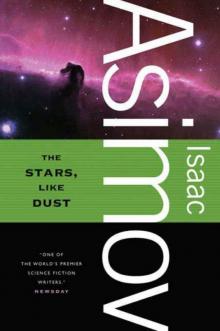 The Stars, Like Dust
The Stars, Like Dust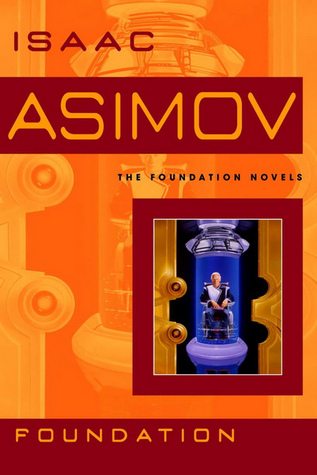 Foundation
Foundation David Starr Space Ranger
David Starr Space Ranger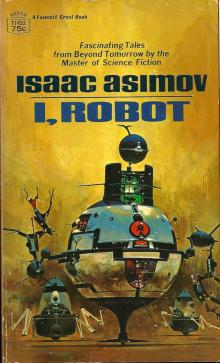 I, Robot
I, Robot Puzzles of the Black Widowers
Puzzles of the Black Widowers Casebook of the Black Widowers
Casebook of the Black Widowers The Ugly Little Boy
The Ugly Little Boy Azazel
Azazel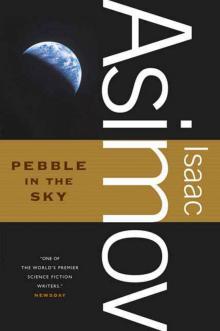 Pebble in the Sky
Pebble in the Sky Foundation and Empire
Foundation and Empire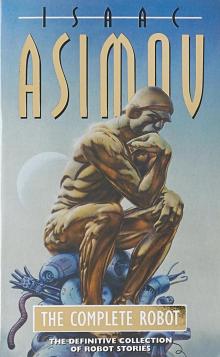 The Complete Robot
The Complete Robot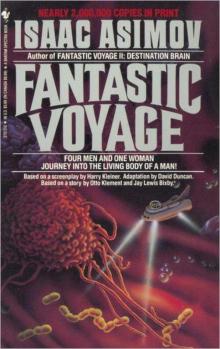 Fantastic Voyage
Fantastic Voyage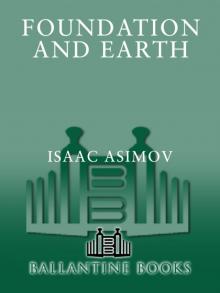 Foundation and Earth
Foundation and Earth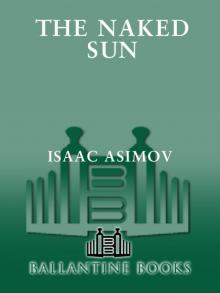 The Naked Sun
The Naked Sun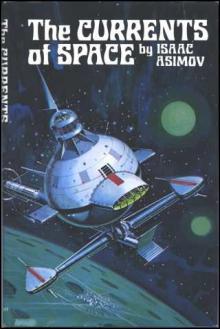 The Currents of Space
The Currents of Space Foundation's Edge
Foundation's Edge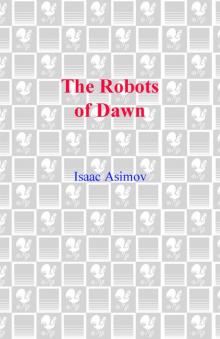 The Robots of Dawn
The Robots of Dawn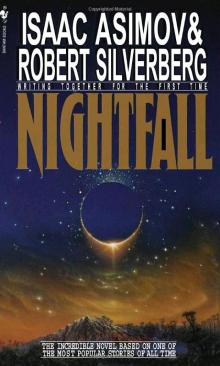 Nightfall
Nightfall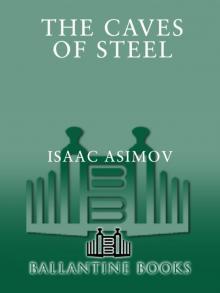 The Caves of Steel
The Caves of Steel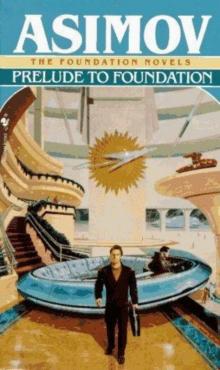 Prelude to Foundation
Prelude to Foundation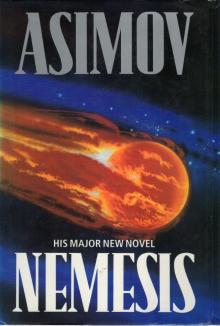 Nemesis
Nemesis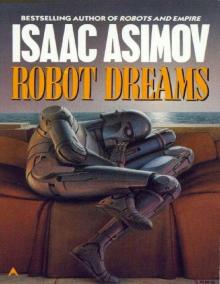 Robot Dreams
Robot Dreams More Tales of the Black Widowers
More Tales of the Black Widowers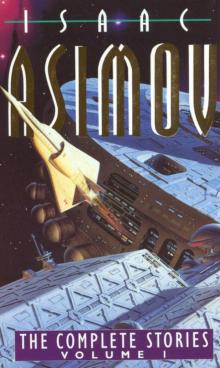 The Complete Stories
The Complete Stories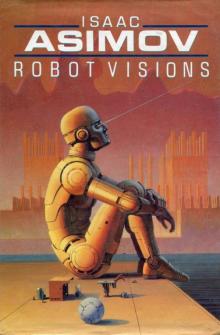 Robot Visions
Robot Visions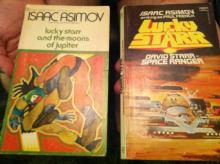 Lucky Starr And The Moons of Jupiter
Lucky Starr And The Moons of Jupiter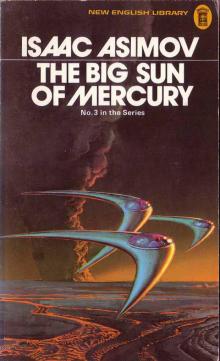 Lucky Starr and the Big Sun of Mercury
Lucky Starr and the Big Sun of Mercury The End of Eternity
The End of Eternity The Bicentennial Man and Other Stories
The Bicentennial Man and Other Stories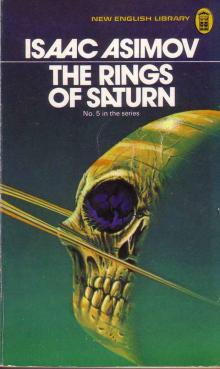 Lucky Starr And The Rings Of Saturn
Lucky Starr And The Rings Of Saturn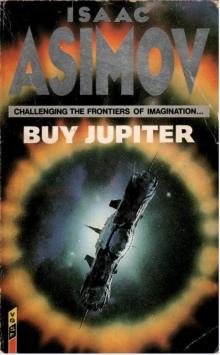 Buy Jupiter and Other Stories
Buy Jupiter and Other Stories Forward the Foundation
Forward the Foundation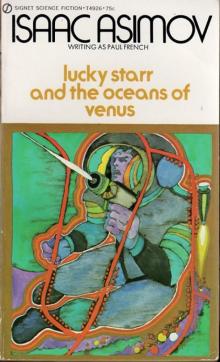 Lucky Starr and the Oceans of Venus
Lucky Starr and the Oceans of Venus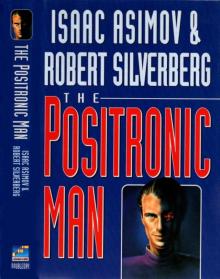 The Positronic Man
The Positronic Man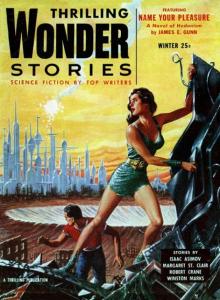 The Portable Star
The Portable Star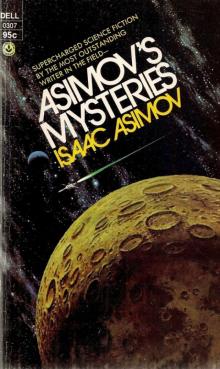 Asimovs Mysteries
Asimovs Mysteries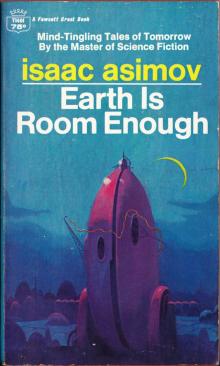 Earth Is Room Enough
Earth Is Room Enough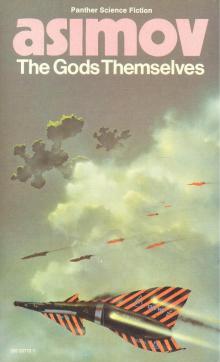 The Gods Themselves
The Gods Themselves Youth
Youth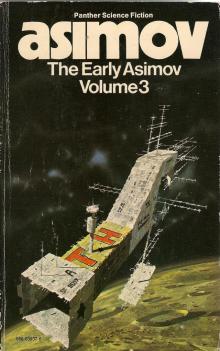 The Early Asimov Volume 3
The Early Asimov Volume 3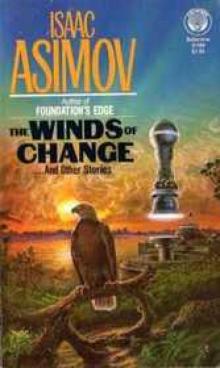 The Winds of Change and Other Stories
The Winds of Change and Other Stories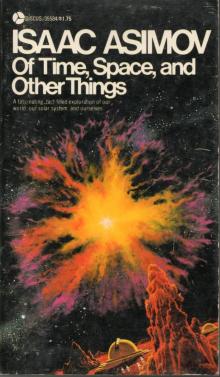 Of Time, Space, and Other Things
Of Time, Space, and Other Things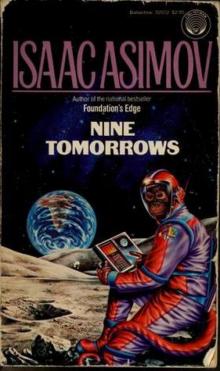 Nine Tomorrows
Nine Tomorrows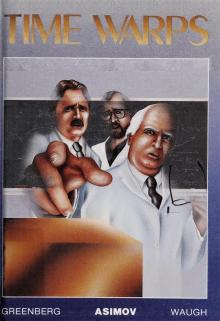 Time Warps
Time Warps Robots and Empire
Robots and Empire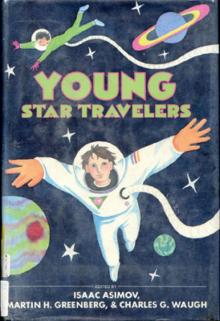 Young Star Travelers
Young Star Travelers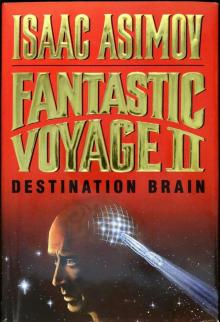 Fantastic Voyage II: Destination Brain
Fantastic Voyage II: Destination Brain Second Foundation
Second Foundation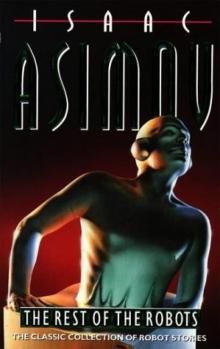 The Rest of the Robots
The Rest of the Robots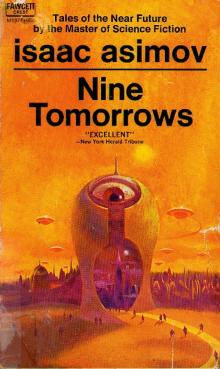 NINE TOMORROWS Tales of the Near Future
NINE TOMORROWS Tales of the Near Future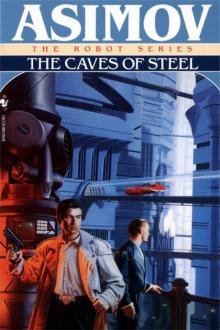 Daneel Olivaw 1 - The Caves of Steel
Daneel Olivaw 1 - The Caves of Steel THE BICENTENNIAL MAN
THE BICENTENNIAL MAN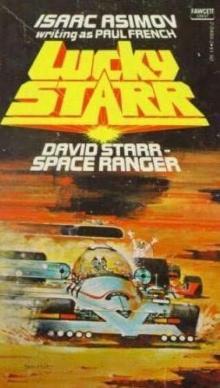 David Starr Space Ranger (lucky starr)
David Starr Space Ranger (lucky starr)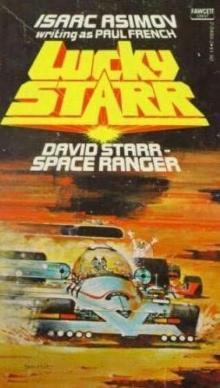 David Starr Space Ranger (ls)
David Starr Space Ranger (ls)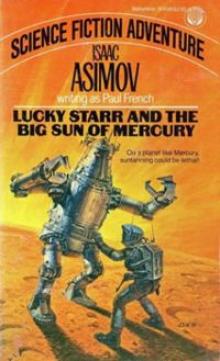 Lucky Starr And The Big Sun Of Mercury ls-4
Lucky Starr And The Big Sun Of Mercury ls-4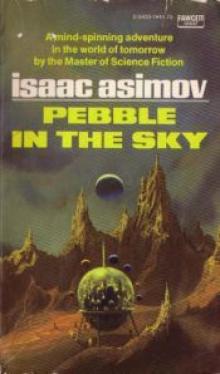 Pebble In The Sky te-1
Pebble In The Sky te-1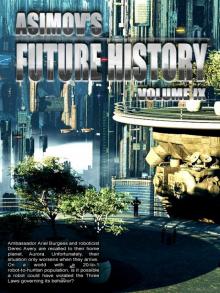 Asimov’s Future History Volume 9
Asimov’s Future History Volume 9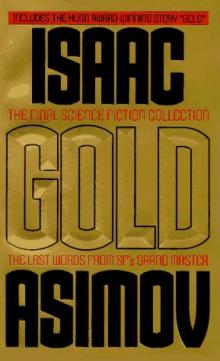 Gold: The Final Science Fiction Collection
Gold: The Final Science Fiction Collection Foundation and Earth f-7
Foundation and Earth f-7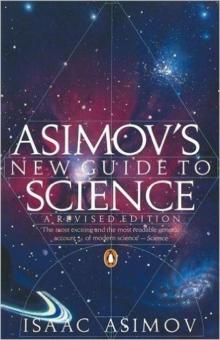 Asimov's New Guide to Science
Asimov's New Guide to Science STORM OVER WARLOCK
STORM OVER WARLOCK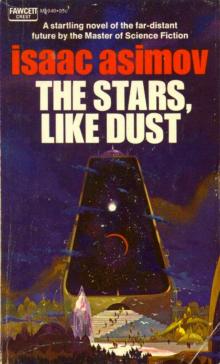 Stars, Like Dust
Stars, Like Dust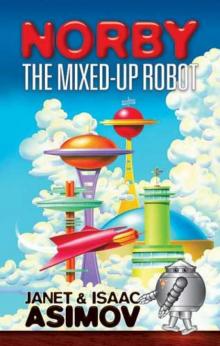 Norby The Mixed-Up Robot
Norby The Mixed-Up Robot Found!
Found!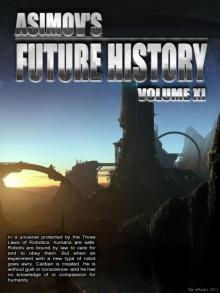 Asimov’s Future History Volume 11
Asimov’s Future History Volume 11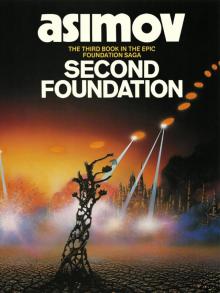 Second Foundation f-5
Second Foundation f-5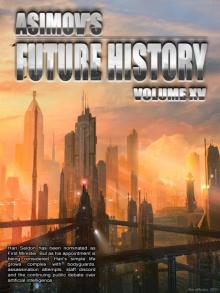 Asimov’s Future History Volume 15
Asimov’s Future History Volume 15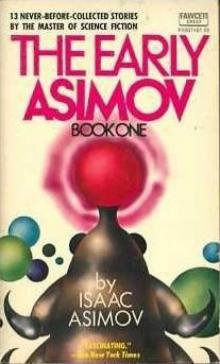 The Early Asimov. Volume 1
The Early Asimov. Volume 1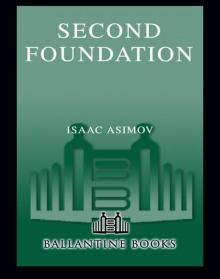 Secound Foundation
Secound Foundation Daneel Olivaw 3 - The Robots of Dawn
Daneel Olivaw 3 - The Robots of Dawn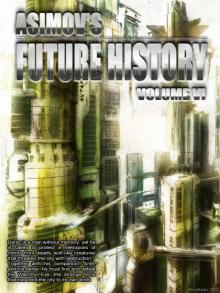 Asimov’s Future History Volume 6
Asimov’s Future History Volume 6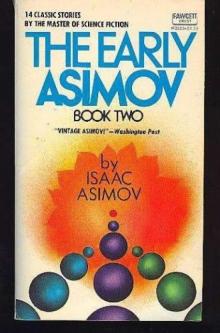 The Early Asimov. Volume 2
The Early Asimov. Volume 2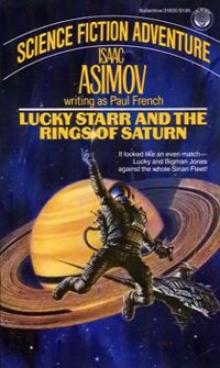 Lucky Starr And The Rings Of Saturn ls-6
Lucky Starr And The Rings Of Saturn ls-6 100 Malicious Little Mysteries
100 Malicious Little Mysteries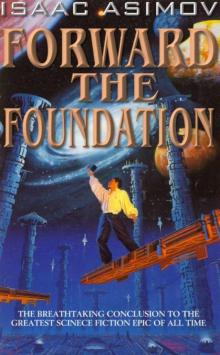 Forward the Foundation f-2
Forward the Foundation f-2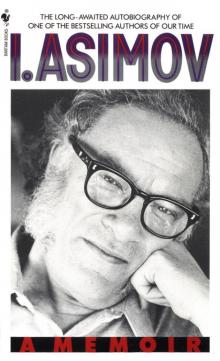 I.Asimov: A Memoir
I.Asimov: A Memoir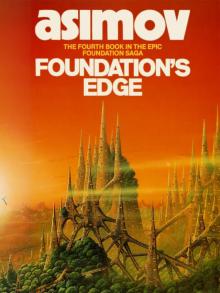 Foundation's Edge f-6
Foundation's Edge f-6 Lucky Starr and the Pirates of the Asteroids ls-2
Lucky Starr and the Pirates of the Asteroids ls-2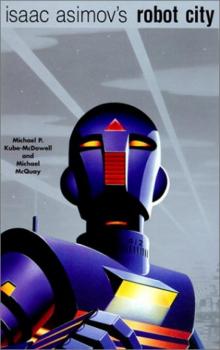 Robot City 1 & 2
Robot City 1 & 2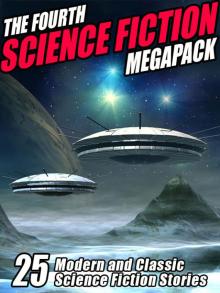 The Fourth Science Fiction Megapack
The Fourth Science Fiction Megapack Asimov’s Future History Volume 16
Asimov’s Future History Volume 16 The Dim Rumble
The Dim Rumble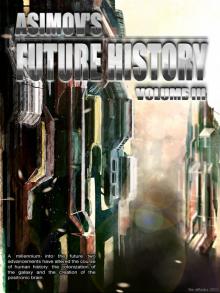 Asimov's Future History Volume 3
Asimov's Future History Volume 3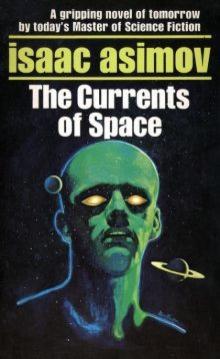 The Currents Of Space te-3
The Currents Of Space te-3 Asimov’s Guide To Shakespear. Volume 1
Asimov’s Guide To Shakespear. Volume 1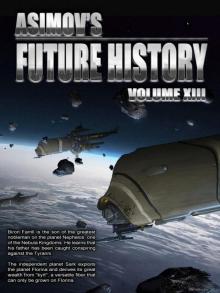 Asimov’s Future History Volume 13
Asimov’s Future History Volume 13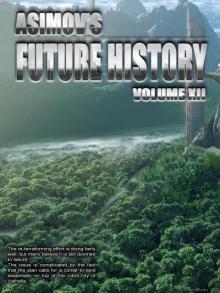 Asimov’s Future History Volume 12
Asimov’s Future History Volume 12 The Secret Sense
The Secret Sense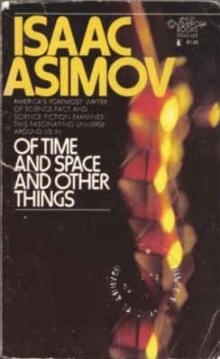 Of Time and Space and Other Things
Of Time and Space and Other Things Norby tnc-2
Norby tnc-2 Norby The Mixed-Up Robot tnc-1
Norby The Mixed-Up Robot tnc-1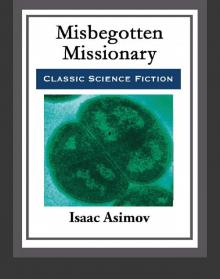 Misbegotten Missionary
Misbegotten Missionary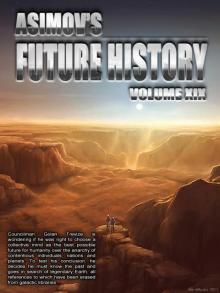 Asimov’s Future History Volume 19
Asimov’s Future History Volume 19 Fantastic Voyage II: Destination Brain fv-2
Fantastic Voyage II: Destination Brain fv-2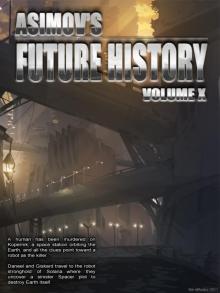 Asimov’s Future History Volume 10
Asimov’s Future History Volume 10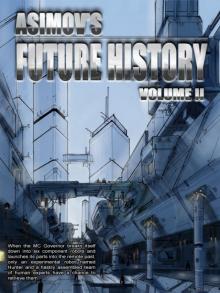 Asimov's Future History Volume 2
Asimov's Future History Volume 2 Feeling of Power
Feeling of Power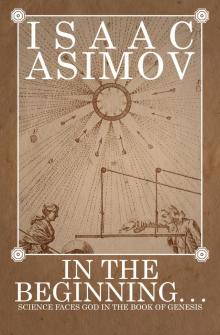 In the Beginning
In the Beginning The Caves of Steel trs-1
The Caves of Steel trs-1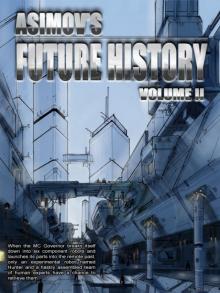 Asimov's Future History Vol 2
Asimov's Future History Vol 2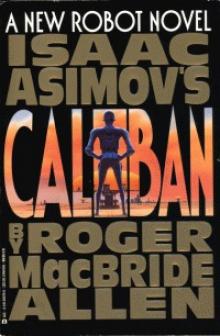 Caliban c-1
Caliban c-1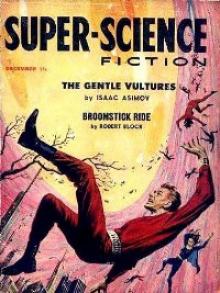 The Gentle Vultures
The Gentle Vultures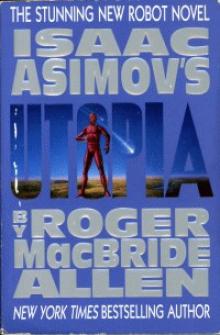 Utopia c-3
Utopia c-3 Prelude to Foundation f-1
Prelude to Foundation f-1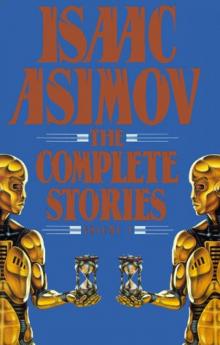 Short Stories Vol.1
Short Stories Vol.1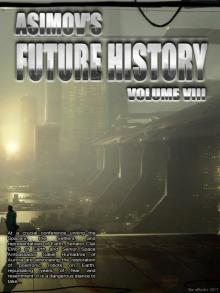 Asimov’s Future History Volume 8
Asimov’s Future History Volume 8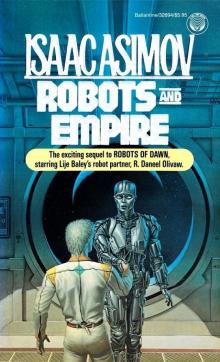 Daneel Olivaw 4 - Robots and Empire
Daneel Olivaw 4 - Robots and Empire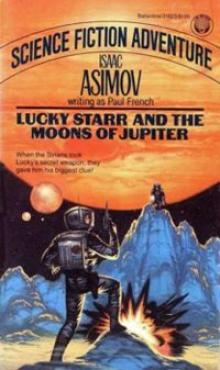 Lucky Starr The And The Moons of Jupiter ls-5
Lucky Starr The And The Moons of Jupiter ls-5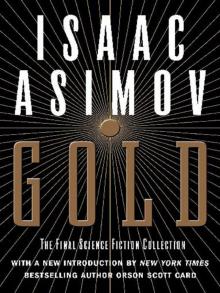 Gold
Gold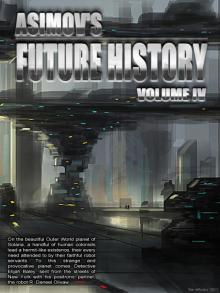 Asimov’s Future History Volume 4
Asimov’s Future History Volume 4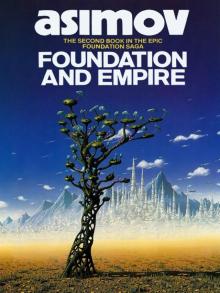 Foundation and Empire f-4
Foundation and Empire f-4 Potential
Potential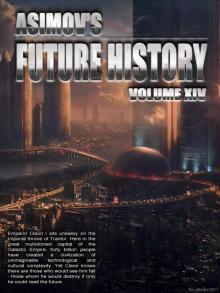 Asimov’s Future History Volume 14
Asimov’s Future History Volume 14 Asimov’s Future History Volume 7
Asimov’s Future History Volume 7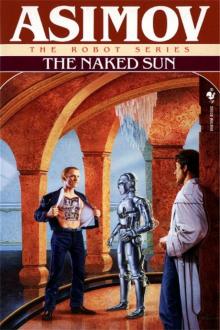 Daneel Olivaw 2 - The Naked Sun
Daneel Olivaw 2 - The Naked Sun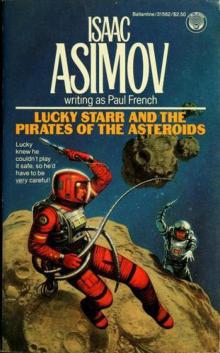 Lucky Starr and the Pirates of the Asteroids
Lucky Starr and the Pirates of the Asteroids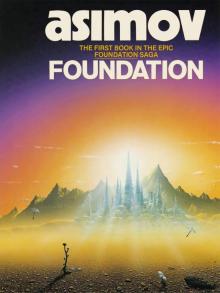 Foundation f-3
Foundation f-3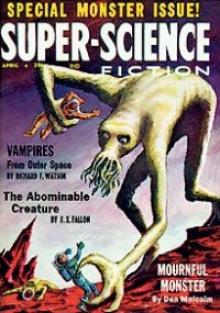 All the Troubles of the World
All the Troubles of the World Cleon the Emperor
Cleon the Emperor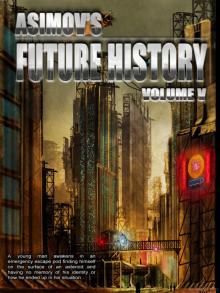 Asimov's Future History Volume 5
Asimov's Future History Volume 5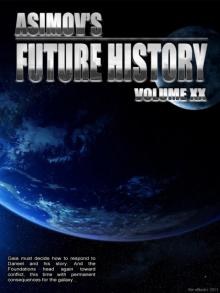 Asimov’s Future History Volume 20
Asimov’s Future History Volume 20 Robots and Empire trs-4
Robots and Empire trs-4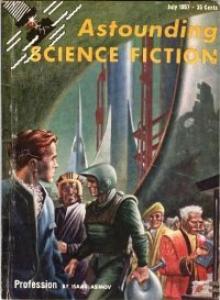 Profession
Profession It's Been a Good Life
It's Been a Good Life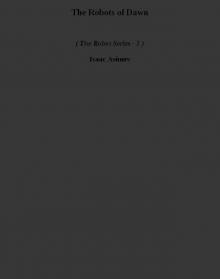 The Robots of Dawn trs-3
The Robots of Dawn trs-3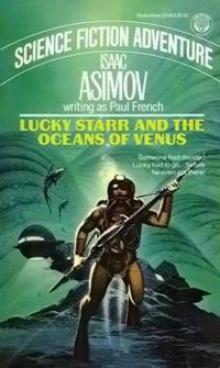 Lucky Starr And The Oceanf Of Venus ls-3
Lucky Starr And The Oceanf Of Venus ls-3 The Naked Sun trs-2
The Naked Sun trs-2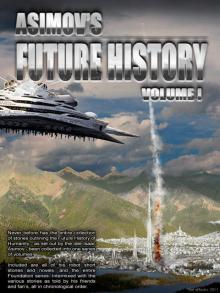 Asimov's Future History Volume 1
Asimov's Future History Volume 1